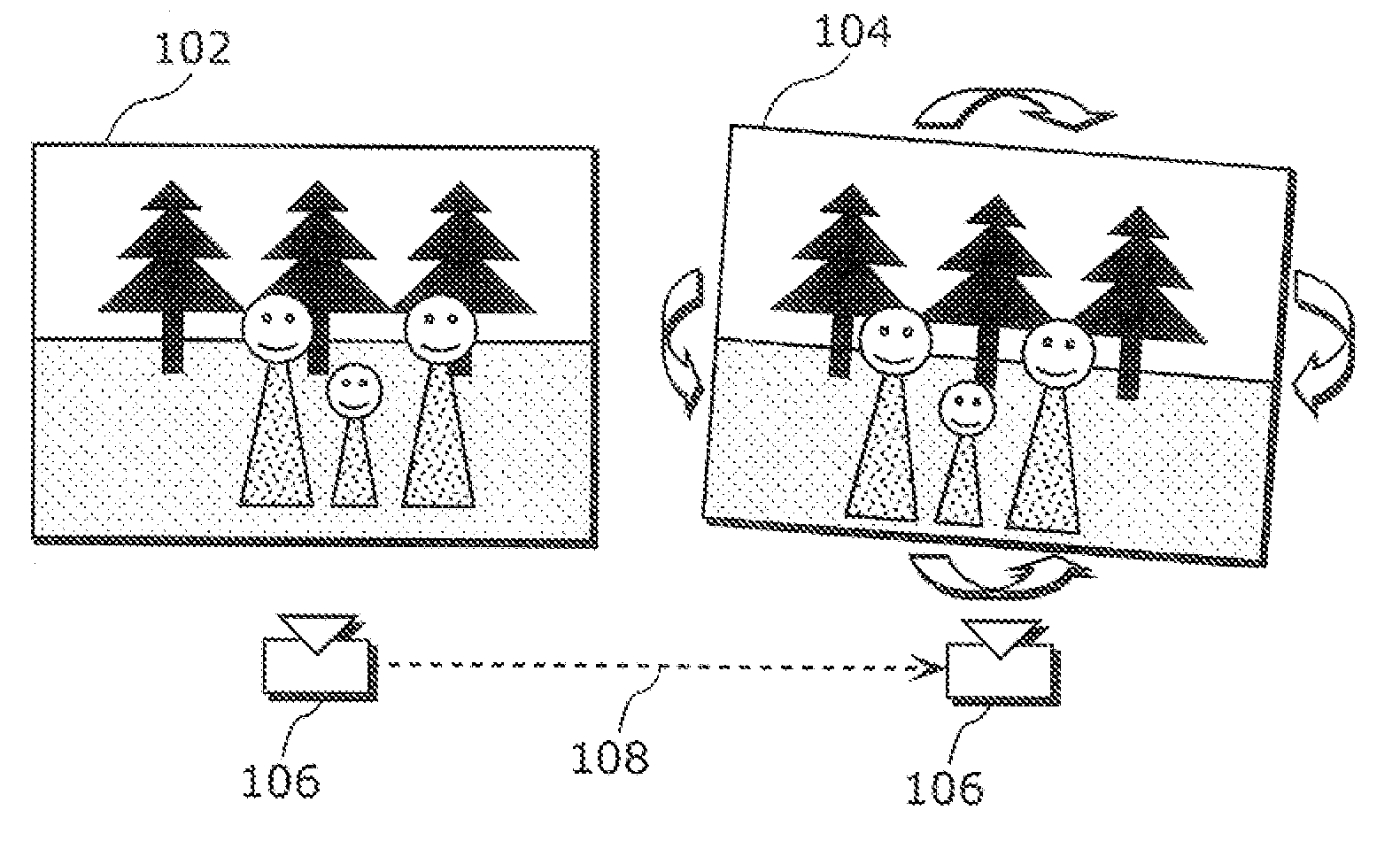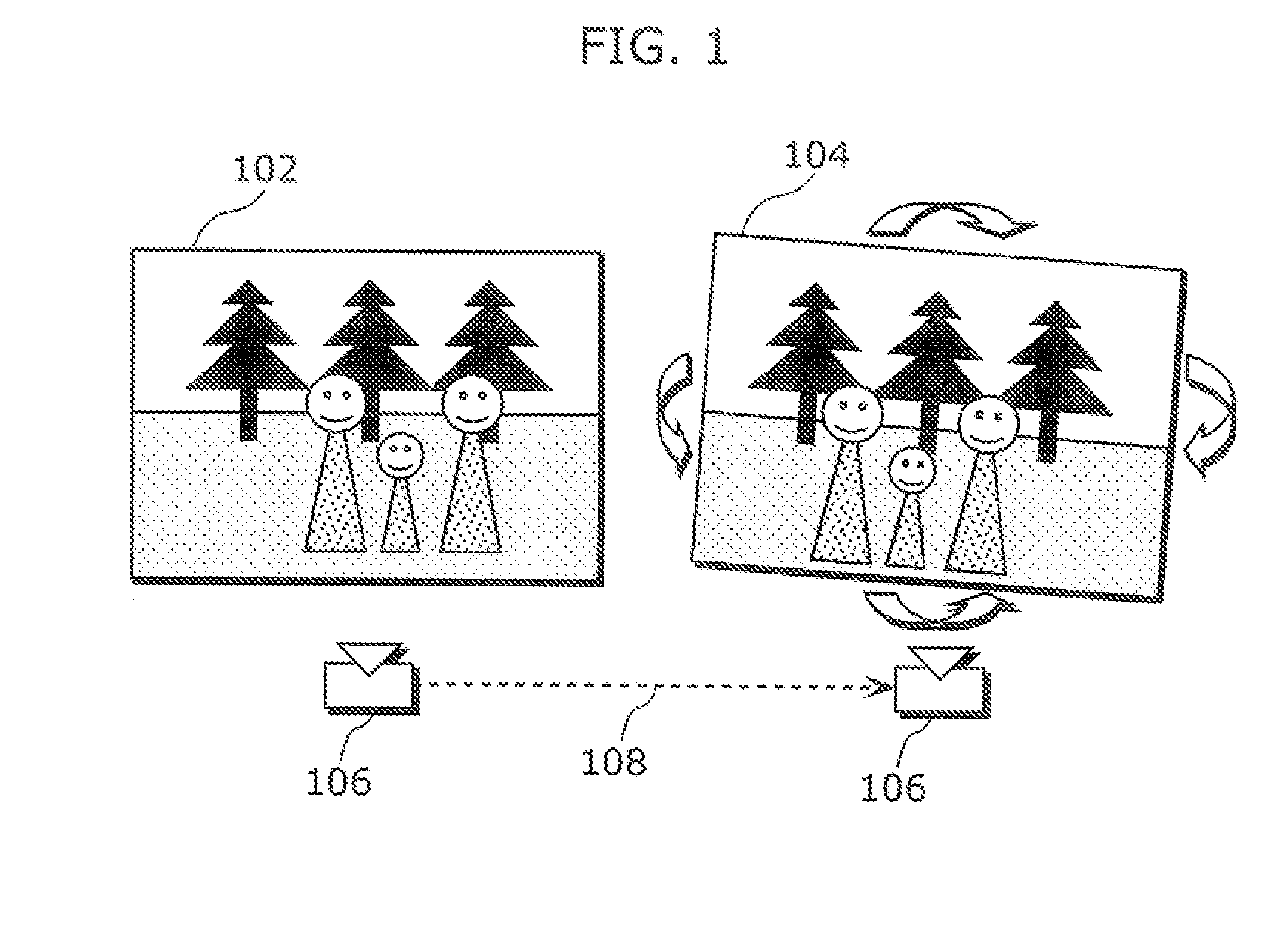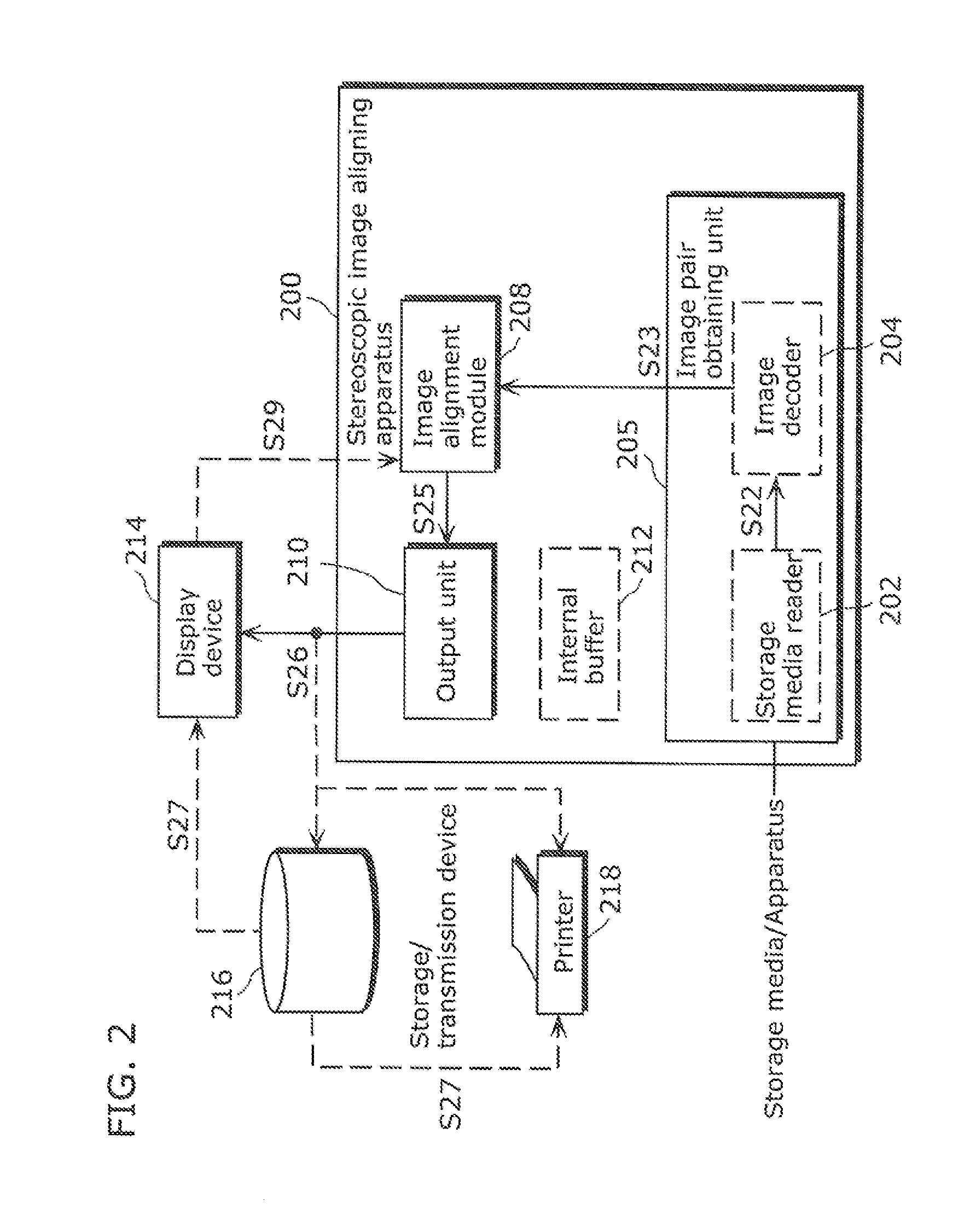Stereoscopic image aligning apparatus, stereoscopic image aligning method, and program of the same
a technology of stereoscopic image and aligning apparatus, applied in the field of stereoscopic image aligning apparatus, can solve the problems of distorted captured images, inconvenient operation, and inability to accurately align the two image sensors (including the optical system) during manufacturing, so as to reduce the vertical parallax, the aspect ratio and the orthogonality of the viewing zone are preserved, and the time-consuming effect is shor
- Summary
- Abstract
- Description
- Claims
- Application Information
AI Technical Summary
Benefits of technology
Problems solved by technology
Method used
Image
Examples
Embodiment Construction
[0070]FIG. 1 shows an example for capturing an image pair using a single sensor capturing device; that is, an image capturing device that includes one lens and one image sensor. The left image 102 and the right image 104 are captured sequentially from different viewpoints using a single sensor digital camera 106. The camera moving distance between the left image 102 and the right image 104 is shown by a distance 108. It can be considered, in this example, that a user captures the left image 102 in a certain position and then moves his hand to the right by the distance 108 for capturing the right image 104.
[0071]In this example, the captured images (the left image 102 and the right image 104) are not aligned and contain the influence of translations and rotations due to camera movement (e.g. by hand). The distance 108 may be varied depending on the scene. For example, the distance 108 is shorter when the target object is closer and the distance 108 is larger when the target object is...
PUM
 Login to View More
Login to View More Abstract
Description
Claims
Application Information
 Login to View More
Login to View More - R&D
- Intellectual Property
- Life Sciences
- Materials
- Tech Scout
- Unparalleled Data Quality
- Higher Quality Content
- 60% Fewer Hallucinations
Browse by: Latest US Patents, China's latest patents, Technical Efficacy Thesaurus, Application Domain, Technology Topic, Popular Technical Reports.
© 2025 PatSnap. All rights reserved.Legal|Privacy policy|Modern Slavery Act Transparency Statement|Sitemap|About US| Contact US: help@patsnap.com



